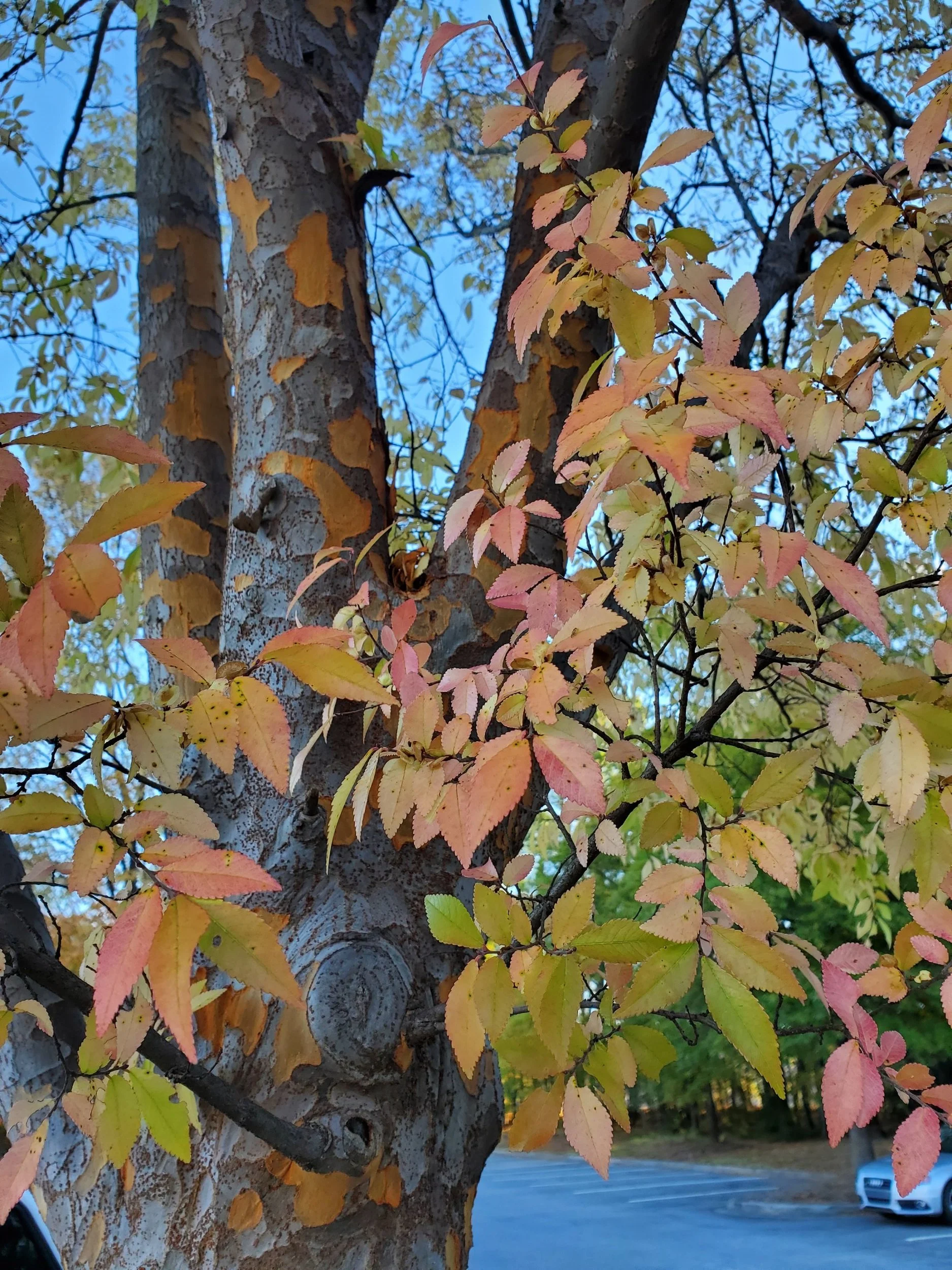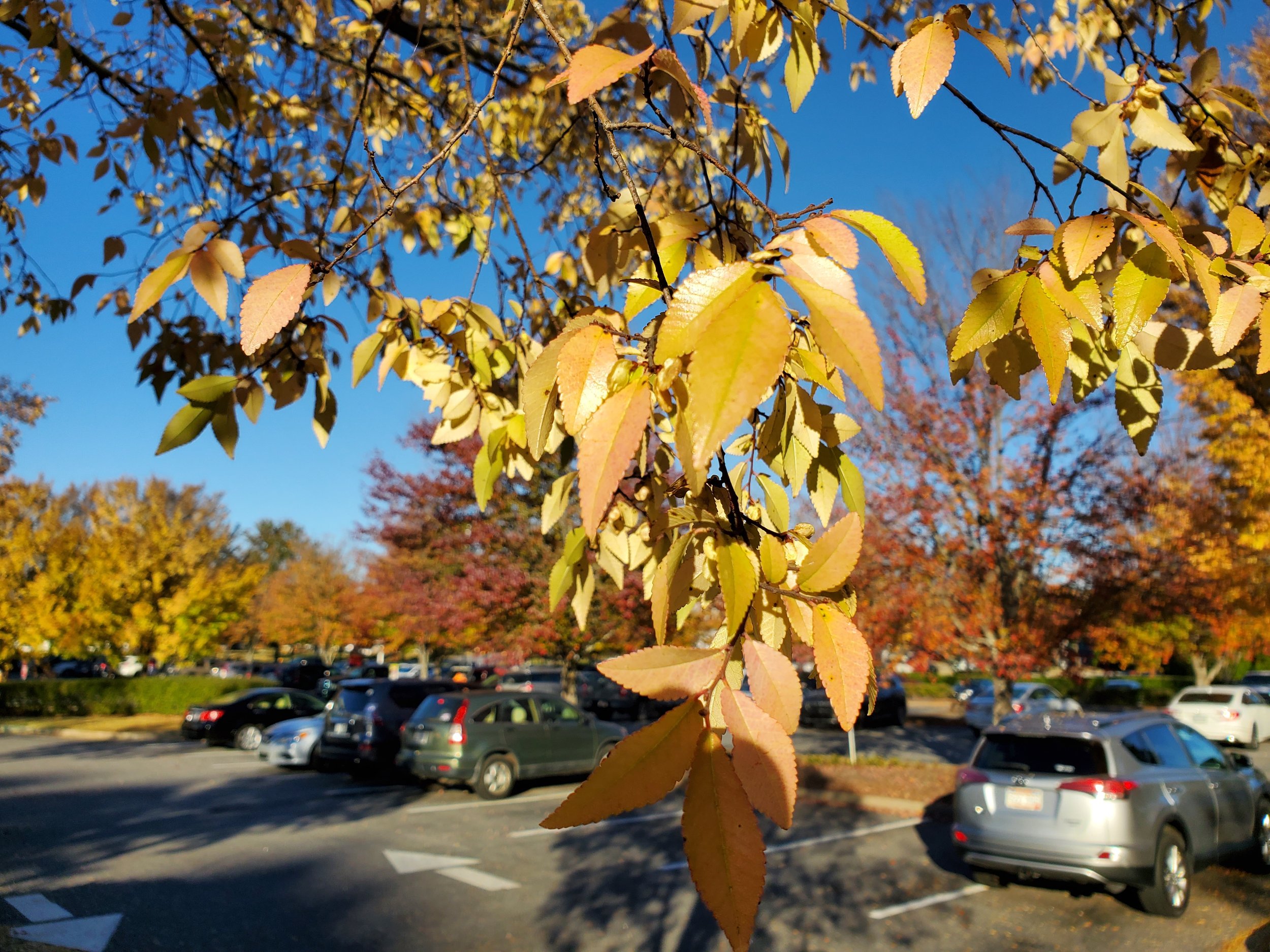I fell in love with a parking lot tree last year. It had the most amazing bark, with an exfoliating habit that revealed tan, cinnamon, and gray patches all at once. The fall color was gorgeous, showing yellow, orange, and rust all at the same time. I’m watching that tree leaf out this spring, and nothing has dampened my affection. The tree in question is a Lacebark Elm, Ulmus parvifolia.
Lacebark Elm makes a good street tree. The one that caught my attention last year is among a group of twenty or so located in planting islands in an asphalt parking lot. They are known for their tolerance for heat and air pollution. They are easily moved, and adaptable to any soil type, acidity, and moisture level. Trees are hardy in zones 5-10. The parking lot trees that caught my attention are U. parvifolia ‘Drake.’ Plant them in full sun to light shade.
Mature Lacebark Elms will reach to 50 feet in height and width. Several dwarf cultivars are available. Their flowers are insignificant, but their seeds are samaras – papery, winged seeds that float in a circular pattern and make one want to play “helicopter.” Those seeds, while pretty and fun, are a downside. They are messy and seem to sprout everywhere if they land on mulched areas. This is not an issue in an asphalt parking lot, but it might cause problems in a home garden location.
Lacebark Elm has slightly weak wood, so locate them where they will not be bombarded by heavy winds. It is resistant to Dutch Elm disease, elm leaf beetle attacks, and Japanese beetle damage.
Early fall color of Lacebark Elm
Trunk colors of Lacebark Elm
Lacebark Elm showing off its early spring leaves. They will darken to a deeper green in another month.



